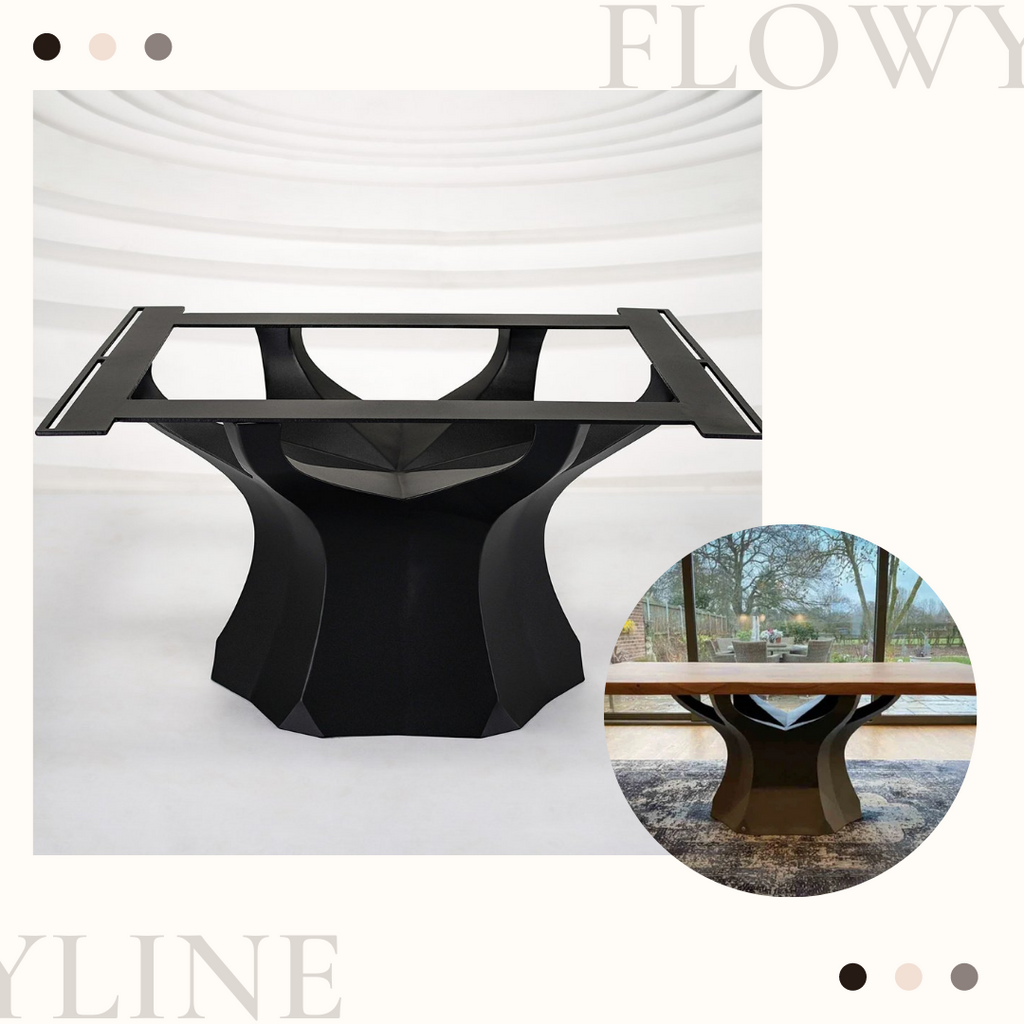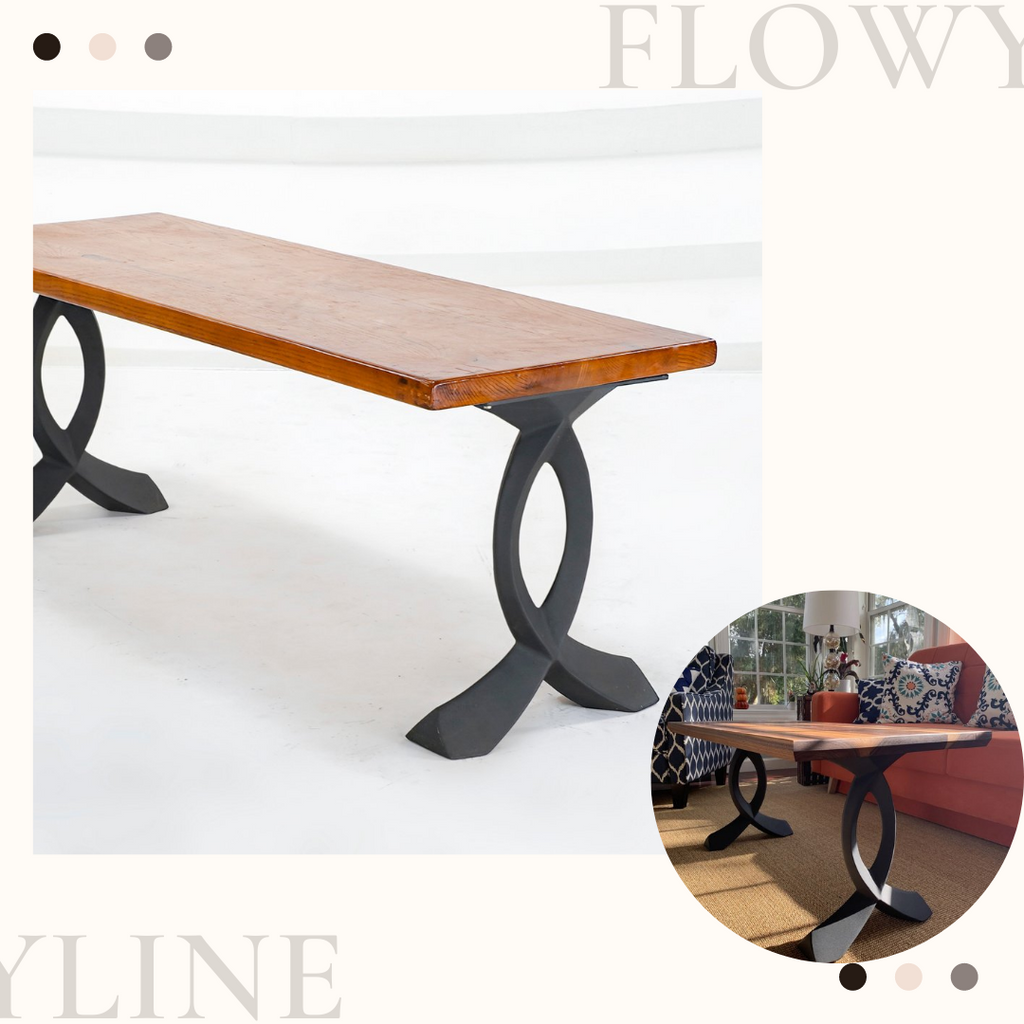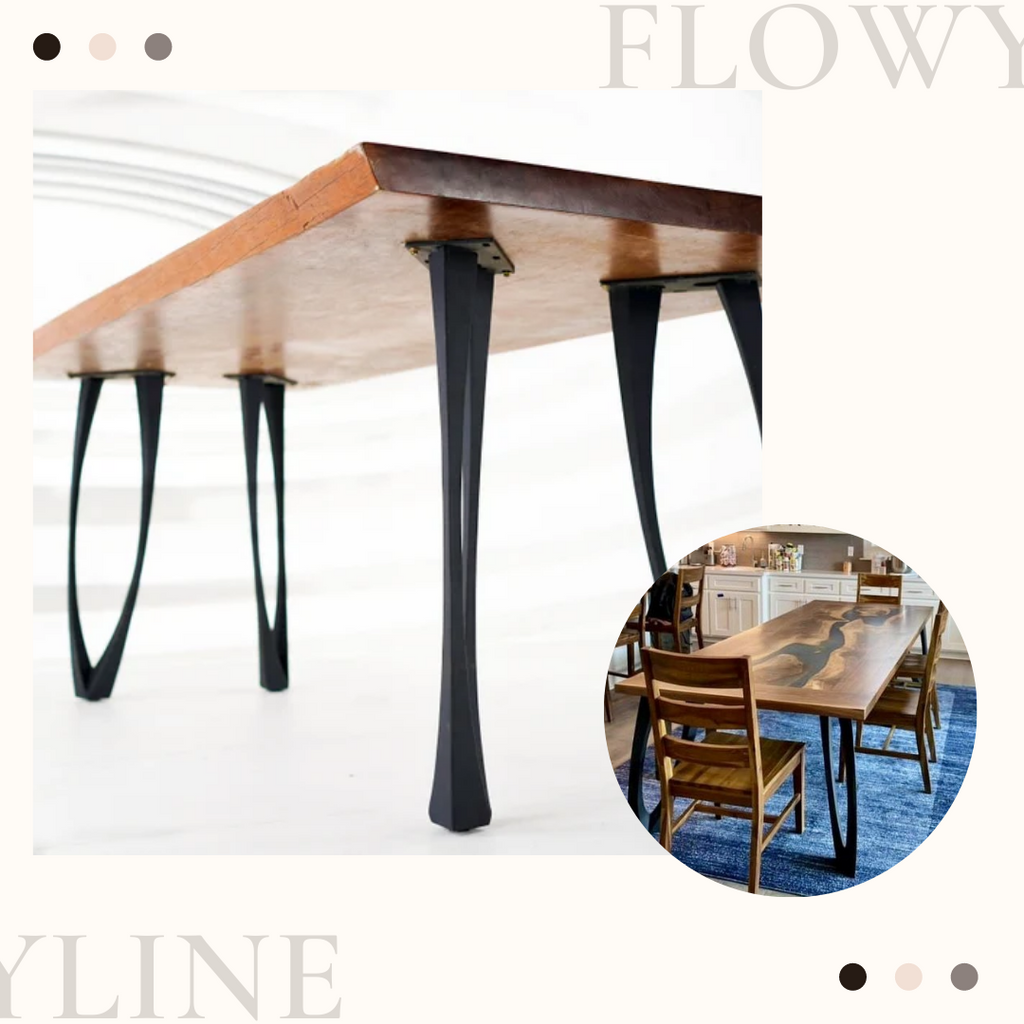A tabletop that is too thin or too thick makes the entire table look odd and disproportionate. How thick should a table top be? Is there a difference in thickness between wood and glass? This article provides you with the necessary information about tabletop thickness and some great table leg suggestions!
Wood Table Thickness

The ideal table top thickness will vary with each material. For wood, it is usually classified based on the purpose of the table:
- Coffee table thickness: It is often used to hold food, books, a few potted plants, or small decorations. So, how thick should a coffee table top be? The answer is 0.75 to 1 inch (1.91 to 2.54 cm). It can also be thinner as long as it fits the design style and surface area.
- Dining table thickness: A minimum of 1 inch (2.54 cm) is considered standard enough to withstand the weight of dishes and basic utensils. But what about in a larger family? There are thicker options for you, from 1.5 to 2 inches (3.81 or 5.08 cm)!
- Desk thickness: A little different from the dining table, the desk needs greater thickness to support the computer, books, and accessories (if you are a setup addict). So, 1 to 1.5 inches (2.54 to 3.81 cm) is ideal for comfort and good support for working and studying.
Besides these usage-based standards, you also need to be aware of a number of other factors that influence this choice.
- Type of wood: Hardwoods like oak or walnut can be used at thinner dimensions without affecting strength, and conversely, soft wood like pine might require a thicker top for similar strength.
- Design and style: Each style has different characteristics. For example, modern designs often feature thinner lines, while rustic or traditional styles may favor thicker, more robust tops.
- Durability and longevity: Thicker wood generally has better durability. The thicker the wood, the more resistant it is to warping, bending, or cracking over time. There is a tip to reinforce this durability by combining high-grade hardwoods like parawood or acacia wood with sturdy metal table legs.
Glass Table Thickness
How thick should a glass table top be depends on the purpose you use it for. If it's just a protective layer over another countertop, 1/4 inch (6mm) is enough. But if you consider it the main table top, then thicker types, including 3/8 inch (10mm), 1/2 inch (12mm), and 3/4 inch (19mm), will be more suitable.
The following tips will help you make your choice easier:
- Type of glass: Tempered or laminated glass also influences the table thickness. Tempered glass is stronger and safer upon breaking, allowing for slightly thinner profiles compared to regular glass. You should also consider the desired aesthetic and whether it matches the room's interior style.
- Safety: Thicker glass is more resistant to breaking and can handle more weight, making it suitable for larger surfaces like dining tables.
- Support capacity: For purely decorative tables or coffee tables containing light objects, 1/4 inch is sufficient. The dining table or desk probably needs a larger size.
Should read: DIY - How Do You Attach Metal To Granite?
Match With the Metal Legs
Remerber to keep the symmetry between the tabletop and table legs. If the table top is thin, choose table legs with a slim design to match each other. On the contrary, larger and wider legs will be suitable for thicker table tops, creating an overall look and impression.
Here at Flowyline - we offer many interesting metal legs designs for various kinds of tabletop, be it a live edge, wood, or epoxy, be it your custom table, dining table, console table, or oval butcher block table.
Let Take a Look at the Best 5 Metal Legs to Go with a Wide Range of Tabletop Thicknesses:
Namu Metal Base for Large Dining Table
The Namu metal table base offers a perfect blend of modern design and robust construction, making it ideal for large dining tables. This base can effortlessly handle the weight of substantial tabletops, making it a reliable choice for any dining setting.

Curva Metal Legs for Coffee Table
The Curva table legs are designed to bring elegance and stability to your coffee table. Crafted from powder coated steel, they are built to last for many years, offering excellent support and durability for various tabletop materials.

Udo Metal Legs for Kitchen Table
505 Udo metal legs's sturdy construction and clean lines offer a timeless appeal that fits a wide range of kitchen designs. They are suitable for daily use with outstanding support, even for countertops up to 1000 lbs.

505 Udo furniture legs for dining table
Credit: Flowyline Design
Buy now: Furniture Legs 505 Udo 28H
Norah Metal Legs for Desk
The Norah is designed with both functionality and aesthetics in mind, making it ideal for desks. Their minimalist design enhances modern workspaces, while their robust steel construction provides reliable support and stability.

407 Norah for home office desk
Credit: Flowyline Design
Buy now: Norah Metal Legs for Desk
Cleo Metal Legs for Console Table
Cleo table legs with unique designs are ideal for console tables. Although the appearance is not as bulky, it has the same support ability as the designs above. It is both elegant and sophisticated, just enough to emphasize the uniqueness of the entryway or living room.

Credit: Flowyline Design
Buy now: Cleo Metal Legs for Console Table
We're furniture manufacturers based in California and sell customizable metal table legs and bases, including farmhouse table legs, coffee table legs, dining table legs, metal table bases, wishbone table base, pedestal table bases, and more.
Ultimately, to know how thick should a table top be, you need to determine your design preferences, intended use, and budget. Regardless of which factors you prioritize, understanding the significance of tabletop thickness empowers you to make an informed decision and choose the perfect tabletop for your furniture piece. To choose the optimal metal table leg, don't hesitate to message us at customerservice@flowyline.com or sign up for email to receive attractive offers!


